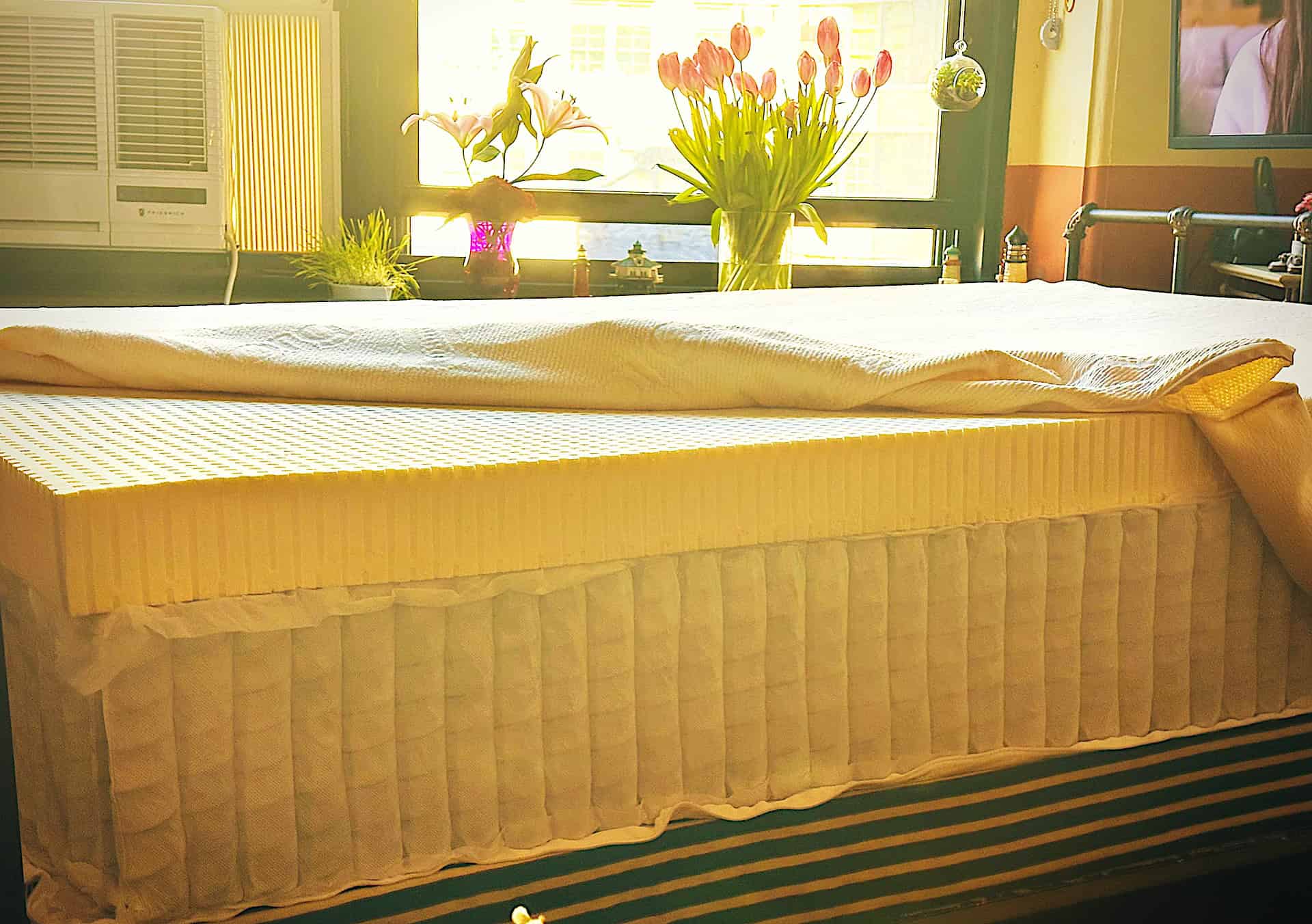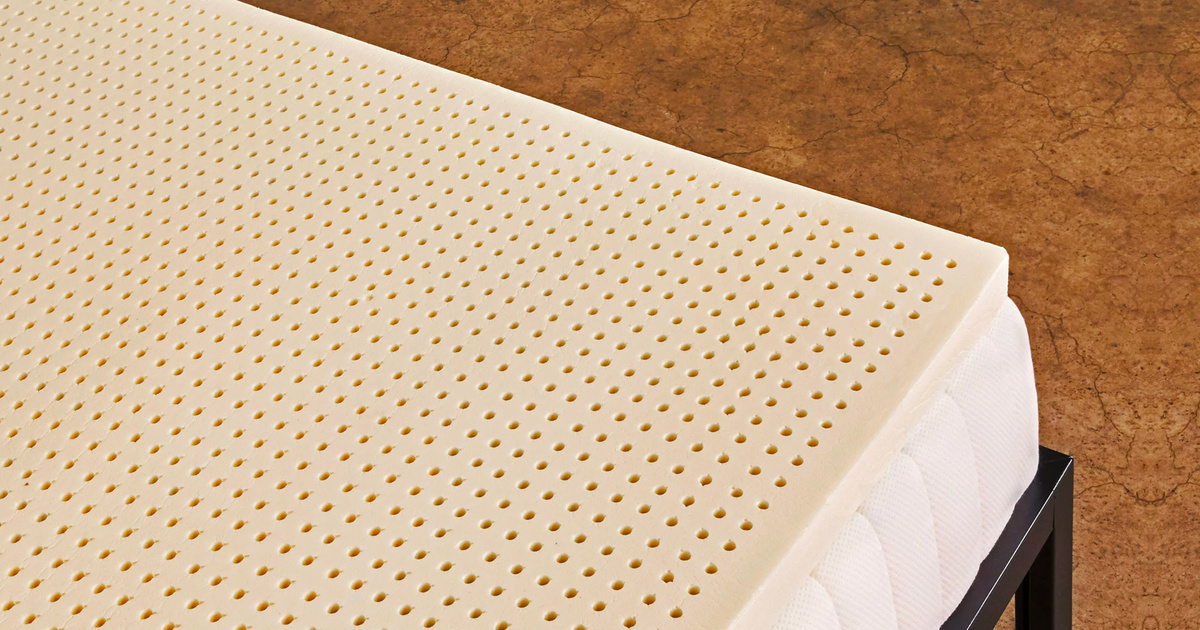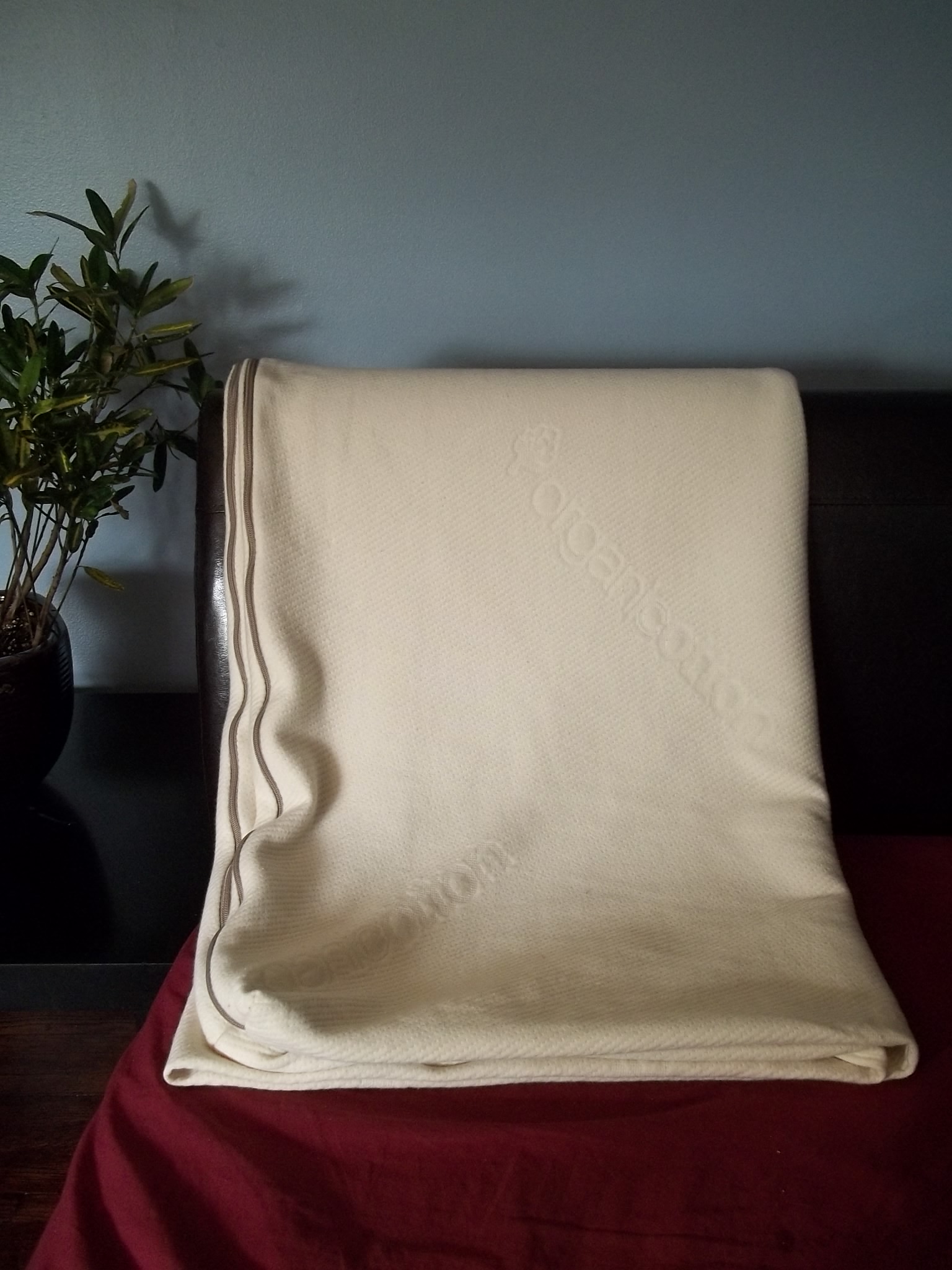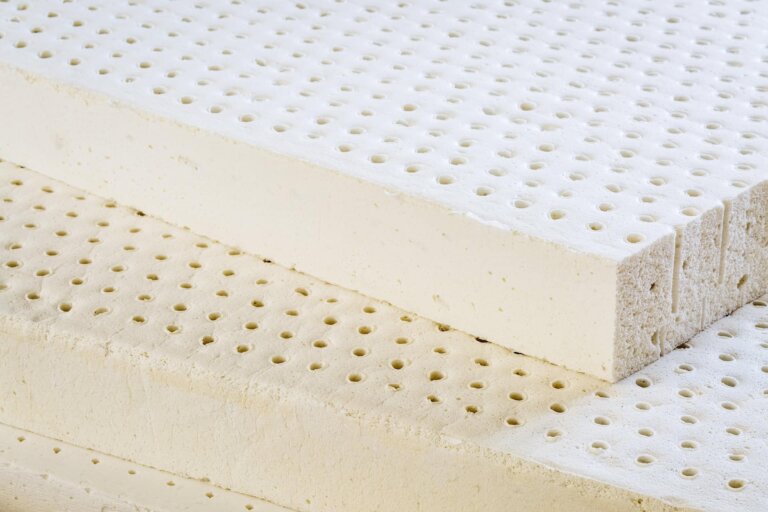
The Gateway Build: An Elegantly Simple DIY Hybrid Mattress
Last modified on:
Why Build a DIY Hybrid Mattress?
Hybrid mattresses are the most popular style of bed sold today, and with good reason. They’re also the most common gateway drug for DIY mattress makers.
Why?
Because they’re easy to buy components for, easy to put together, and, quite frankly, they sleep like a dream.
People genuinely love their DIY hybrid mattresses, much like this Redditor and his girlfriend. ⬇️
A Happy Hybrid Mattress Maker
AFTER DIY: “Best of all, my girlfriend conceded that she was completely wrong, she loves it. We’ve been sleeping on it for the past 3 nights and she’s telling everyone how great the new bed is.”
The Sweet Spot
The beloved DIY hybrid mattress combines the bounce and support of a traditional coil base with the comfort and contouring of foam or latex on top.
The result? A sleep experience that feels both responsive and cushioned at the same time.
The basic structure is simple: a supportive pocketed coil system on the bottom, topped with one or more comfort layers (often latex, for its breathability and resilience), all enclosed in a zippered mattress cover.
The real beauty of a DIY hybrid build is the flexibility.
You can fine-tune firmness, height, and materials to suit your exact sleep preferences, rather than settling for a one-size-fits-all mattress in a box.

DIY Hybrid Mattress 101: The Perfect Blend of Foam & Coils
Your DIY hybrid mattress starts here: easy steps, quality materials, and a build that outperforms big-box beds every time.
Materials
(top to bottom)
Instructions
- Start by unzipping your mattress cover and laying the bottom half flat on your bed frame or foundation. Slatted bases are best—just make sure the slats are no more than 3″ apart for solid support and great airflow.
- Place your pocketed coil unit directly onto the base of the cover. Center it carefully—it should sit snugly with just a bit of room around the edges if needed. Pocketed coils have a little give, so finesse it into place.
- Gently lay your latex comfort layer right on top of the coils. No glue, no stress—it’s a simple stack. Give it a moment to settle and smooth it out a bit with your hands if needed.
- Zip up your cover, taking care not to pinch the foam or snag the edges.
- You’ve just built your first DIY hybrid mattress (!), and it probably already feels better than any factory-sealed mattress.
Notes
This mattress is a fantastic build all on its own, and many DIYers consider this one of the holy grail blueprints. It’s an absolute classic.
However! You really can add some fancy extras that elevate this build into some very luxe territory.
If you’d like, you can use two 2″ latex toppers of different densities (softer or firmer) to give yourself some ‘play around’ room to find the perfect config for you. You can even add a thin (one or two inches) layer of gel-infused, memory, or serene foam if you like a little bit of ‘sink in’ on your mattress.
Many DIYers love a layer of wool on top of their mattresses. Wool is a fantastic temperature modulator, keeping people cooler in summer and warmer in winter.
You can add wool as wool batting, directly on top of your top latex layer. Or, you can add an external wool topper either inside or outside of your zippered cover.
The video below ⬇️ demonstrates how to put together an all-latex foam mattress. It’s not exactly the same as Alex’s build, but it’s similar enough to get a general idea of how to assemble this mattress.
Recommended Products
Choosing the Right Pocket Coil System
Not all coil units are created equal, and choosing the right one is key to how your hybrid mattress will feel and perform. Here are the basics to help you navigate the options:
Coil Gauge
Coil gauge tells you how thick the steel is. A higher number means thinner wire and a softer, more flexible feel.
Common DIY builds use gauges between 13.5 (very (very!) firm) and 15.5 (softer and more flexible – but still very supportive).
For average-weight sleepers (say, under 200 lbs), a 14–15.5 gauge coil is usually ideal. Heavier people (higher BMI) or strict stomach sleepers may want to opt for something closer to 13.5 or 14 for firmer support.
If you’re under 130 lbs or a side sleeper, you will likely want a softer (higher) gauge to avoid pressure points.
Zoned vs. Non-Zoned Units
Some coil systems are zoned, meaning different areas of the mattress offer different levels of firmness.
For example, you might get firmer coils under your hips (to support your spine) and softer coils near your shoulders and legs.
Zoned coils are great for back and stomach sleepers who benefit from targeted support.
But some side sleepers find zoned units a little too firm across the shoulders and hips, especially if paired with a thinner comfort layer.
Coil Height: 6″ vs. 8″
The two most common pocket coil heights in DIY builds are 6″ and 8″.
The 6″ coils tend to create a firmer, more compact mattress profile and can feel a bit more rigid. They’re great for low-profile builds or for sleepers who like a firmer foundation.
The 8″ coils, by contrast, offer a bit more give, bounce, and airflow. They also allow more layering possibilities and a slightly more “elevated” feel, both literally and figuratively.
Coil Count & Configuration
Coil count refers to how many individual springs are in the unit, with higher counts often providing better contouring and motion isolation.
But it’s not just about the number, also pay attention to the configuration.
Some units use coils arranged in rows (standard), while others feature quad coils or perimeter-reinforced coils to reduce motion transfer and improve edge support.
Coil count is helpful to know, but the overall feel will also come down to how those coils are arranged and what materials you layer above them.









